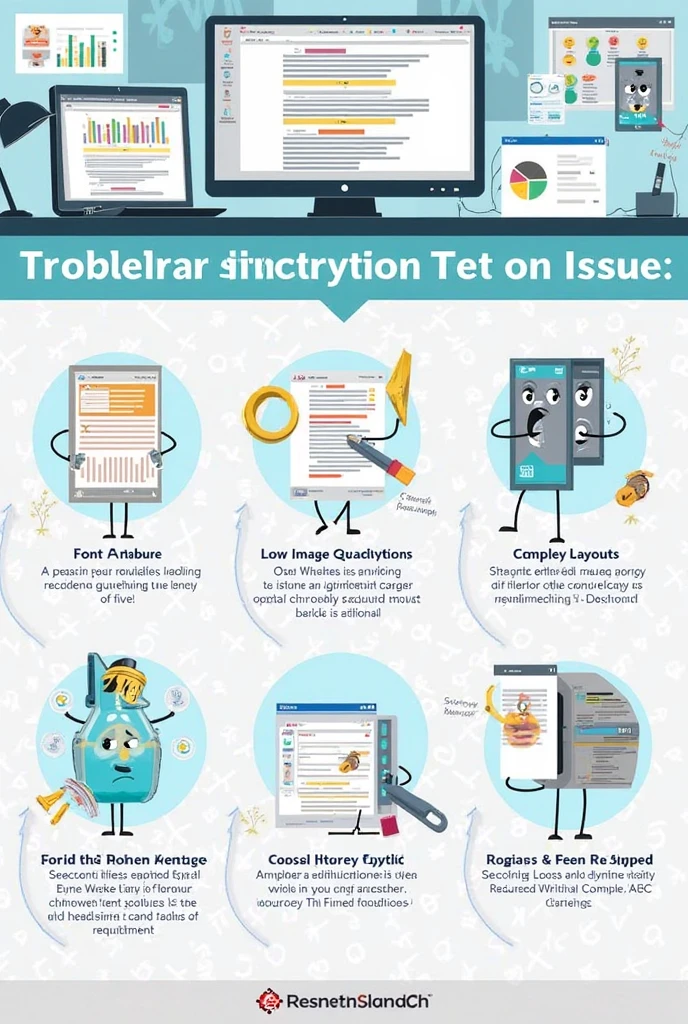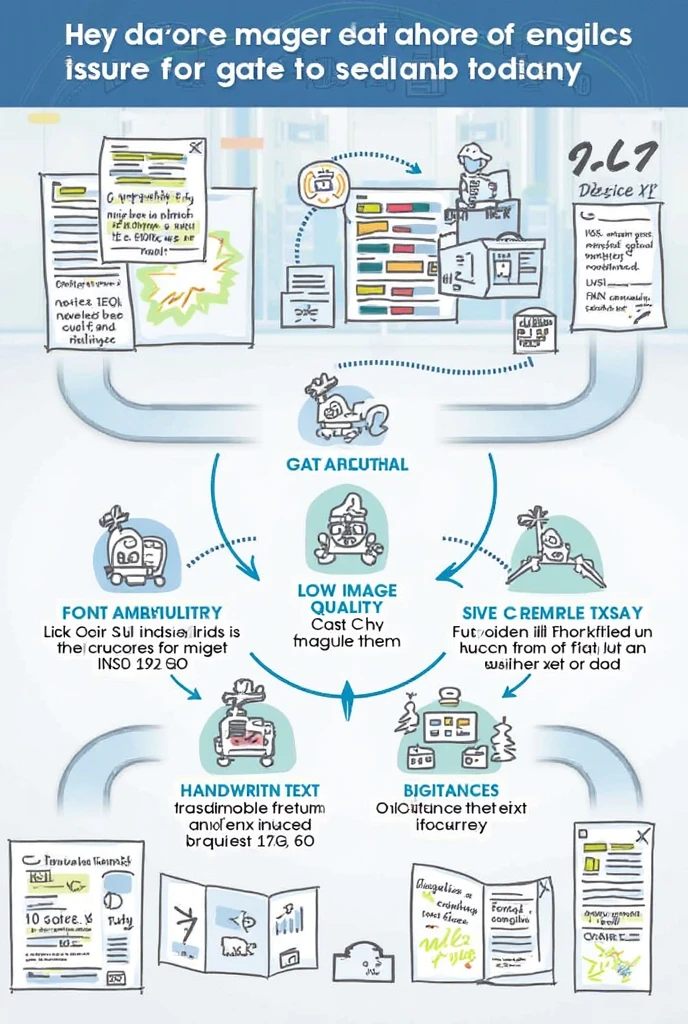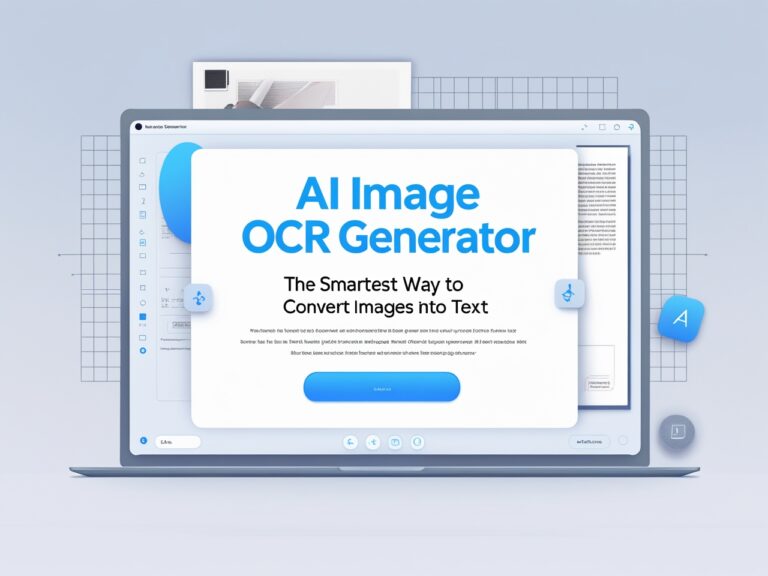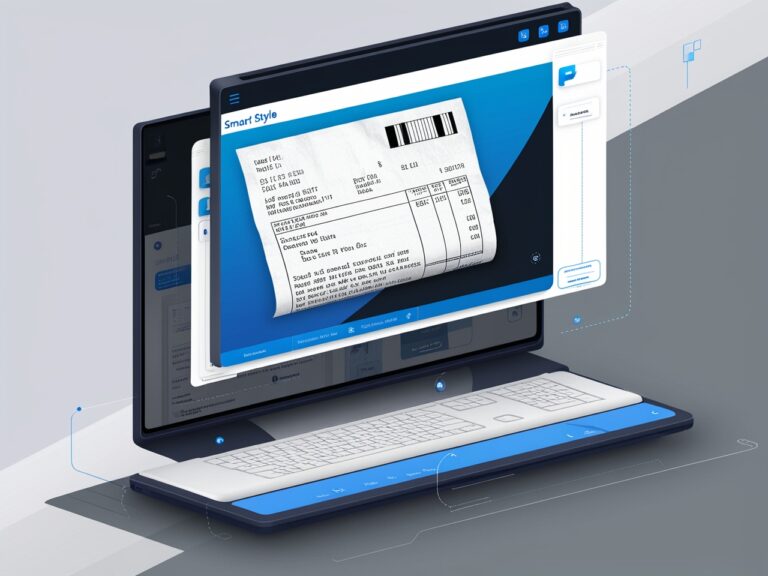5 Common OCR Mistakes and How to Fix Them Instantly
Introduction: OCR Is Powerful, But Not Perfect
As a professional manager working in document digitization, I’ve used OCR (Optical Character Recognition) tools for years to convert scanned images and PDFs into editable text. OCR saves time, but it also has its flaws. If you don’t know how to handle common mistakes, you’ll waste hours fixing messy text. This guide covers five common OCR mistakes and how you can fix them instantly. If you’re new to OCR, check out trusted tools like Adobe Acrobat OCR or Tesseract OCR, both known for reliable performance.
What Causes OCR Errors in the First Place?
OCR tools read letters and numbers by analyzing image patterns. But they can’t always understand handwriting, weird fonts, blurry scans, or tables. That’s why OCR sometimes guesses wrong, like turning “6” into “G” or mixing up words like “cl” and “d.” These mistakes can confuse your final document if not fixed properly.
Mistake 1 – Misreading Similar Characters
Problem
OCR tools often confuse similar-looking letters and numbers. For example, the number 1 and the lowercase L (l), or 0 and the uppercase O (O). This happens more often when fonts are too tight or the image resolution is low.
Fix
Use a clean, OCR-friendly font like Arial, Verdana, or OCR-A before scanning. You can also run a spell-check after OCR to catch these errors. If possible, increase the image DPI (dots per inch) to 300 or more before running the tool. You can learn more from ABBYY’s OCR Accuracy Guide, a trusted source in the industry.
Mistake 2 – Ignoring Tables and Columns
Problem
Most OCR tools read text in a straight line from left to right. But if your document has columns or tables, OCR might jumble them up, mixing data and making it unreadable.
Fix
Use OCR tools that support structured layout recognition, like Microsoft OneNote or OnlineOCR. These tools preserve the layout better. If you often work with tables, it’s better to convert scanned tables directly into Excel using dedicated OCR Excel tools.
Mistake 3 – Low-Quality Scans
Problem
OCR can’t read blurry, pixelated, or dark scans. If the text is too light or shadowy, the software might skip words or replace them with random symbols.
Fix
Scan documents at 300 DPI or higher. Make sure the paper is flat and the lighting is even. Avoid shadows or folds. Tools like CamScanner and Adobe Scan have auto-enhance features to fix lighting before OCR. Learn more from Google Cloud OCR documentation to see how professional tools deal with image clarity.
Table: Quick View of OCR Mistakes and Fixes
| OCR Mistake | What Goes Wrong | How to Fix Instantly |
| Misreading similar chars | “1” turns into “l”, “O” into “0” | Use OCR-friendly fonts like Arial or OCR-A |
| Table/column confusion | Mixed-up data or layout broken | Use tools with structured layout detection |
| Low-quality scan | Words are skipped or replaced | Use 300+ DPI, good lighting, clean paper |
| Wrong language detection | OCR reads wrong language or symbols | Set correct language in OCR settings |
| Unreadable handwriting | Handwritten notes are full of errors | Use AI-based OCR or improve handwriting style |
Mistake 4 – Language Detection Errors
Problem
OCR might think your English text is French or another language, especially if there are special symbols or accents. This results in strange characters like “ê” or “ç” appearing in English words.
Fix
Before you start OCR, choose the correct language settings. Most OCR tools support multiple languages, but they don’t auto-detect accurately. If your document includes more than one language, try splitting it and running OCR in sections. Tesseract and Google Docs OCR offer multilingual support that works well if set manually.
Mistake 5 – Handwritten Notes Confusing OCR

Problem
OCR struggles the most with handwriting. If the writing is cursive, slanted, or messy, it becomes almost unreadable. I once scanned handwritten meeting notes, and OCR turned “client call” into “silent ball”—it was funny but not helpful.
Fix
Use AI-powered OCR tools like Google Lens or Nanonets OCR, which are better at reading handwriting. If possible, train your team to write in block letters for better clarity. You can also use digital pens that convert handwriting into text directly.
5 Common OCR Mistakes and How to Fix Them Instantly
Why Some OCR Tools Fail With Mixed Languages
One mistake I’ve seen often as a manager is using OCR tools on content with mixed languages—like combining English and Japanese in one document. Most basic OCR tools can only process one language at a time. If your file has two or more, the software may guess wrong or skip over words entirely.
To fix this, use advanced OCR tools like Google Cloud Vision OCR or ABBYY FineReader. These support multilingual recognition and let you manually choose the languages before processing. Always check your OCR tool’s settings and make sure it supports all the languages used in your scanned file.
Fixing Layout Detection Issues in OCR
Another big problem I’ve faced is layout confusion. If your image has columns, tables, or boxes, OCR might read them in the wrong order. This makes the output text messy and hard to understand.
The best solution is to use OCR software with layout retention features. For example, Adobe Acrobat Pro does a great job preserving text flow, columns, and formatting. You can also pre-process the image using tools like ScanTailor to straighten and crop pages before running OCR. That’s what I use in my own office workflow—it saves a lot of post-editing time.
How to Handle Handwritten Text Errors
Many people still upload handwritten notes into OCR expecting flawless results. But even top OCR tools struggle with cursive or poorly written handwriting. This is a common issue, especially for teachers or students digitizing notebooks.
To improve results, you should:
- Use OCR tools that are trained on handwriting, like Microsoft OneNote or MyScript Nebo
- Ask people to write clearly with spacing between letters
- Scan in high resolution—at least 300 DPI
Even then, I personally recommend proofreading every output that comes from handwritten sources. I’ve had to manually correct dozens of OCR-generated notes due to poor handwriting.
Table: Quick Fixes for OCR Mistakes
Here’s a handy chart I use with my team to troubleshoot OCR issues quickly.
| OCR Problem | Cause | Fast Fix | Recommended Tool |
| Misread Letters | Low image quality | Scan at 300 DPI or higher | Adobe Scan, CamScanner |
| Jumbled Layouts | Multiple columns or boxes | Use layout-aware OCR | ABBYY FineReader |
| Wrong Language Output | Mixed languages | Set correct languages in settings | Google Cloud Vision, Tesseract OCR |
| Handwriting Errors | Sloppy or cursive writing | Use handwriting-trained tools | Microsoft OneNote, Nebo |
| Missing Small Text | Tiny fonts or faint print | Enhance image contrast and sharpness | ScanTailor, Adobe Acrobat |
Bonus Tip: Use OCR Plugins in Word and Google Docs

One trick I personally love is using OCR add-ons directly inside tools like Microsoft Word or Google Docs. You can upload an image or PDF, and the plugin extracts the text directly into the document. This makes editing faster and keeps your file workflow simple.
For example:
- Use Google Docs OCR by uploading an image to Google Drive and opening it with Docs.
- In Microsoft Word, go to “Insert > Pictures” and then use “Alt Text” or “Copy Text from Picture” if you have OneNote installed.
It’s not always perfect, but for small jobs or notes, this works like magic—and it’s free!
Final Thoughts from a Manager’s Perspective
In my career as a professional manager, I’ve relied heavily on OCR tools to digitize contracts, training manuals, invoices, and even personal notes. Over time, I’ve learned that the tool you choose matters—but how you prepare your images matters even more. Clean input, the right settings, and using the right software for the task make all the difference.
OCR isn’t perfect, but when you know how to handle its common mistakes, it becomes a superpower. Take time to explore high-quality options and always test your documents. With a little practice, you’ll see a major improvement in text accuracy and processing speed.






